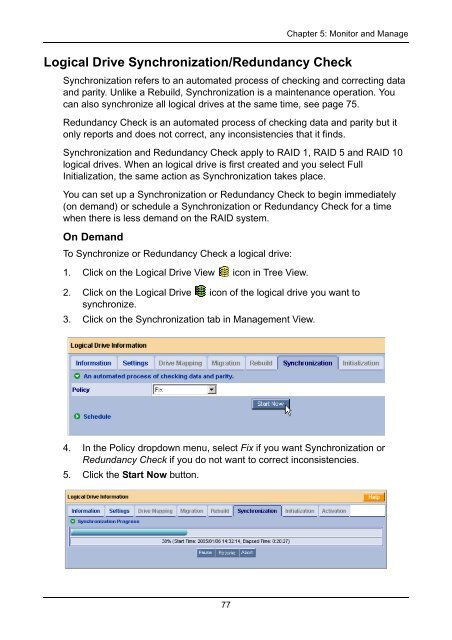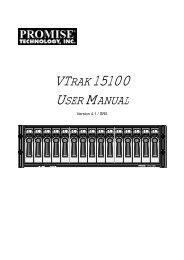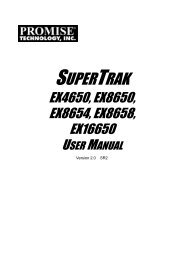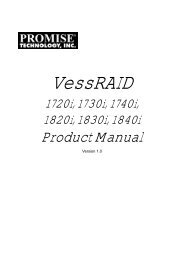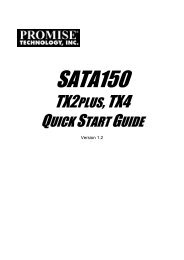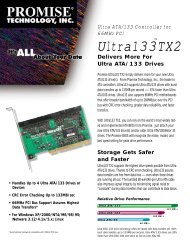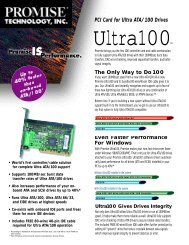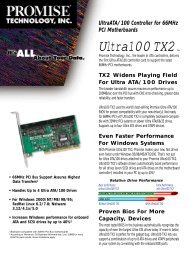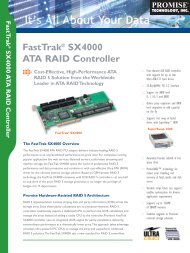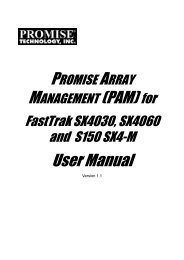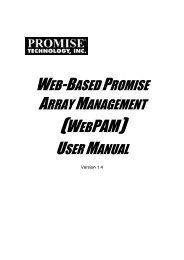WebPAM User v1.5 - Promise Technology, Inc.
WebPAM User v1.5 - Promise Technology, Inc.
WebPAM User v1.5 - Promise Technology, Inc.
You also want an ePaper? Increase the reach of your titles
YUMPU automatically turns print PDFs into web optimized ePapers that Google loves.
77<br />
Chapter 5: Monitor and Manage<br />
Logical Drive Synchronization/Redundancy Check<br />
Synchronization refers to an automated process of checking and correcting data<br />
and parity. Unlike a Rebuild, Synchronization is a maintenance operation. You<br />
can also synchronize all logical drives at the same time, see page 75.<br />
Redundancy Check is an automated process of checking data and parity but it<br />
only reports and does not correct, any inconsistencies that it finds.<br />
Synchronization and Redundancy Check apply to RAID 1, RAID 5 and RAID 10<br />
logical drives. When an logical drive is first created and you select Full<br />
Initialization, the same action as Synchronization takes place.<br />
You can set up a Synchronization or Redundancy Check to begin immediately<br />
(on demand) or schedule a Synchronization or Redundancy Check for a time<br />
when there is less demand on the RAID system.<br />
On Demand<br />
To Synchronize or Redundancy Check a logical drive:<br />
1. Click on the Logical Drive View icon in Tree View.<br />
2. Click on the Logical Drive<br />
synchronize.<br />
icon of the logical drive you want to<br />
3. Click on the Synchronization tab in Management View.<br />
4. In the Policy dropdown menu, select Fix if you want Synchronization or<br />
Redundancy Check if you do not want to correct inconsistencies.<br />
5. Click the Start Now button.


